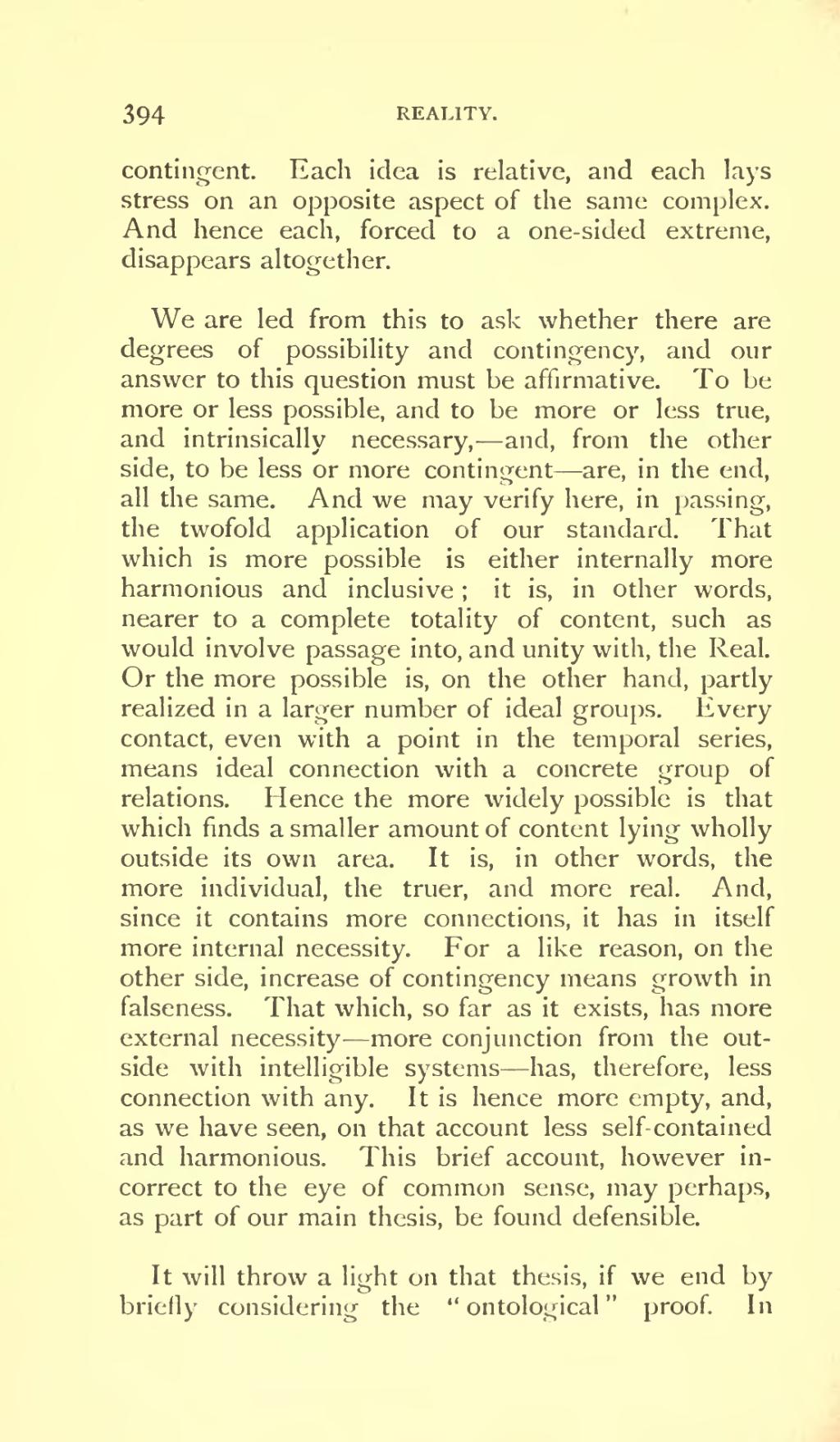contingent. Each idea is relative, and each lays stress on an opposite aspect of the same complex. And hence each, forced to a one-sided extreme, disappears altogether.
We are led from this to ask whether there are degrees of possibility and contingency, and our answer to this question must be affirmative. To be more or less possible, and to be more or less true, and intrinsically necessary,—and, from the other side, to be less or more contingent—are, in the end, all the same. And we may verify here, in passing, the twofold application of our standard. That which is more possible is either internally more harmonious and inclusive; it is, in other words, nearer to a complete totality of content, such as would involve passage into, and unity with, the Real. Or the more possible is, on the other hand, partly realized in a larger number of ideal groups. Every contact, even with a point in the temporal series, means ideal connection with a concrete group of relations. Hence the more widely possible is that which finds a smaller amount of content lying wholly outside its own area. It is, in other words, the more individual, the truer, and more real. And, since it contains more connections, it has in itself more internal necessity. For a like reason, on the other side, increase of contingency means growth in falseness. That which, so far as it exists, has more external necessity—more conjunction from the outside with intelligible systems—has, therefore, less connection with any. It is hence more empty, and, as we have seen, on that account less self-contained and harmonious. This brief account, however incorrect to the eye of common sense, may perhaps, as part of our main thesis, be found defensible.
It will throw a light on that thesis, if we end by briefly considering the “ontological” proof. In
